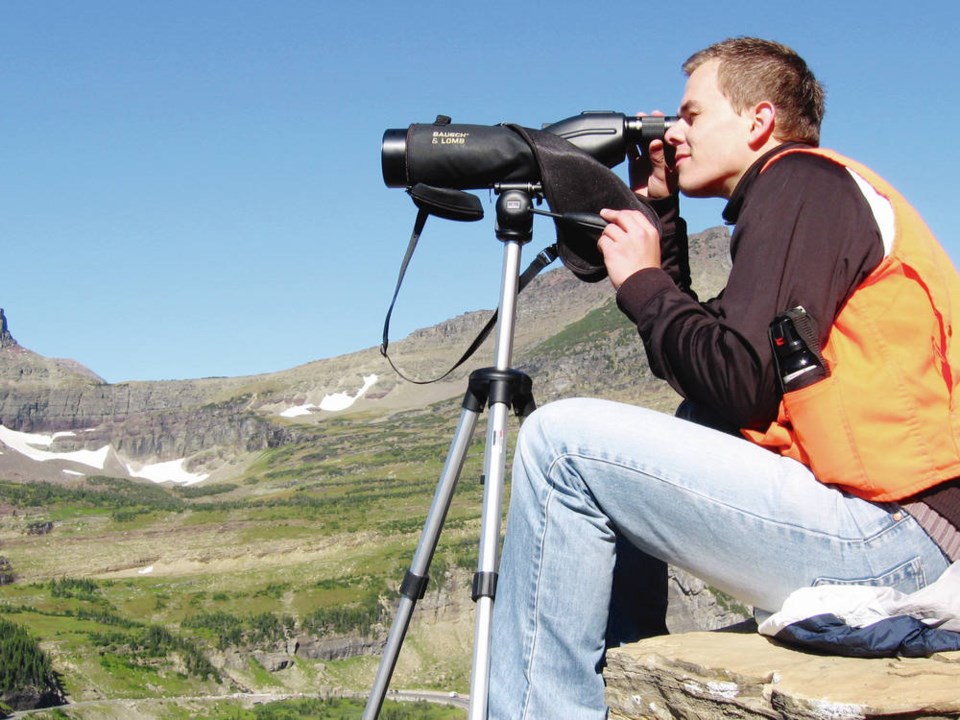This past year, we’ve all faced big changes. Whether it’s how we interact with others, supervise staff remotely, buy groceries, organize our work, recreation, outings and other activities, there are few aspects of life and business that the pandemic hasn’t affected.
This can be seen during April – Citizen Science Month. Even before the latest retrenchment measures to control COVID-19 spread were announced, the number of citizen science events planned for April in communities around B.C. was down. Again.
Pre-pandemic, groups of people of all ages would gather on various days throughout the month to watch for, seek out and document plants and animals in their communities. These bioblitzes are citizen science efforts to record as many species within designated locations and time periods as possible. Many of these events have taken place at about the same time every year, leading to annual snapshots of the biodiversity in a particular place and how it has changed over time.
But last year, as we reeled from public health-ordered shutdowns, many events were postponed or cancelled. The Mount Arrowsmith Biosphere Region bioblitz, the Metchosin bioblitz, the Parksville wetlands mini-bioblitz, and others, hit the brakes.
Data collected during these and similar events are used by scientists and ecologists to assess and monitor species health in regions and individual communities. Thanks to these data, the western screech owl, rusty blackbird, and Newfoundland red crossbill were added to Canada’s Species at Risk lists. The data also help researchers track, for example, spread of disease or invasive species across North America.
Without the repeated, regular snapshots that annual bioblitzes provide, the data — and therefore our understanding of what is going on — suffer.
Some of these citizen science events changed because of the pandemic. They shifted their approaches to allow participants to apply the required physical-distancing requirements. They moved to virtual or direct-input formats, whereby the individuals who saw the plant or critter in the field entered the information onto the online data platforms — usually eBird or iNaturalist. Some changed timeframes. Instead of occurring on a particular weekend, they’re spread over several weeks or longer. Some partnered with similar organizations to share resources while meeting common objectives.
For example, in Langley, the Yorkson Watershed Enhancement Society normally organized one June bioblitz evening when groups of people catalogued the biodiversity of Yorkson Creek. Last year, because of the pandemic, the society contacted other environmental groups in the area to run the bioblitz over two weeks instead and have volunteers record and catalogue online the plants and animals they identified.
The Georgia Strait Alliance partnered with Ocean Bridge for the 10-day Great Salish Sea Bioblitz in July. The Nature Conservancy of Canada ran the Big Backyard BioBlitz across Canada in August. The B.C. Parks Foundation launched the Big Nature Challenge, in which 24,000 people crowd-sourced more than 1,250,000 wildlife observations in B.C. throughout 2020. This year, they’re aiming for two million wildlife sightings. (See naturechallenge.ca.)
The Victoria Natural History Society adjusted logistics and survey areas for the region’s annual Christmas Bird Count. During the December 2020 event, 270 volunteers counted 90,000 birds in Greater Victoria. The society also runs the region’s annual butterfly counts. During one weekend each month in April-September, citizen science counters are assigned specific areas to seek out, count and record butterflies and their species. (For information, email [email protected].)
The Habitat Acquisition Trust and the provincial government launched the Southern Vancouver Island Community Bat Program to monitor bat activity and the spread of white nose syndrome, a fungus decimating bat species across North America. The public is encouraged to report dead bats or any sightings of winter bat activity to the program via bcbats.ca.
The Metchosin Bioblitz, previously held in May, became a year-long virtual affair. By December of 2020, they had catalogued more than 2,900 species in the Metchosin area. The 2021 virtual bioblitz also runs all year. (See inaturalist.org/projects/metchosin-bioblitz-2021.)
And some of the April events are returning. The Mount Arrowsmith Biosphere Region is holding its first ever Biosphere Blitz, a modified version of its annual, smaller BioBlitz. On April 16-18, participants from Nanoose Bay to Qualicum Bay will use iNaturalist to log their observations of plants, animals, fungus and tracks throughout the designated region. (See mabr.ca/upcoming-events.)
These are just a handful of the citizen science events you can take part in in the region. There are many more, run locally, nationally or internationally.
If you’re interested in learning more or learning about others, ask around, search online, or contact one of the area’s nature organizations.



